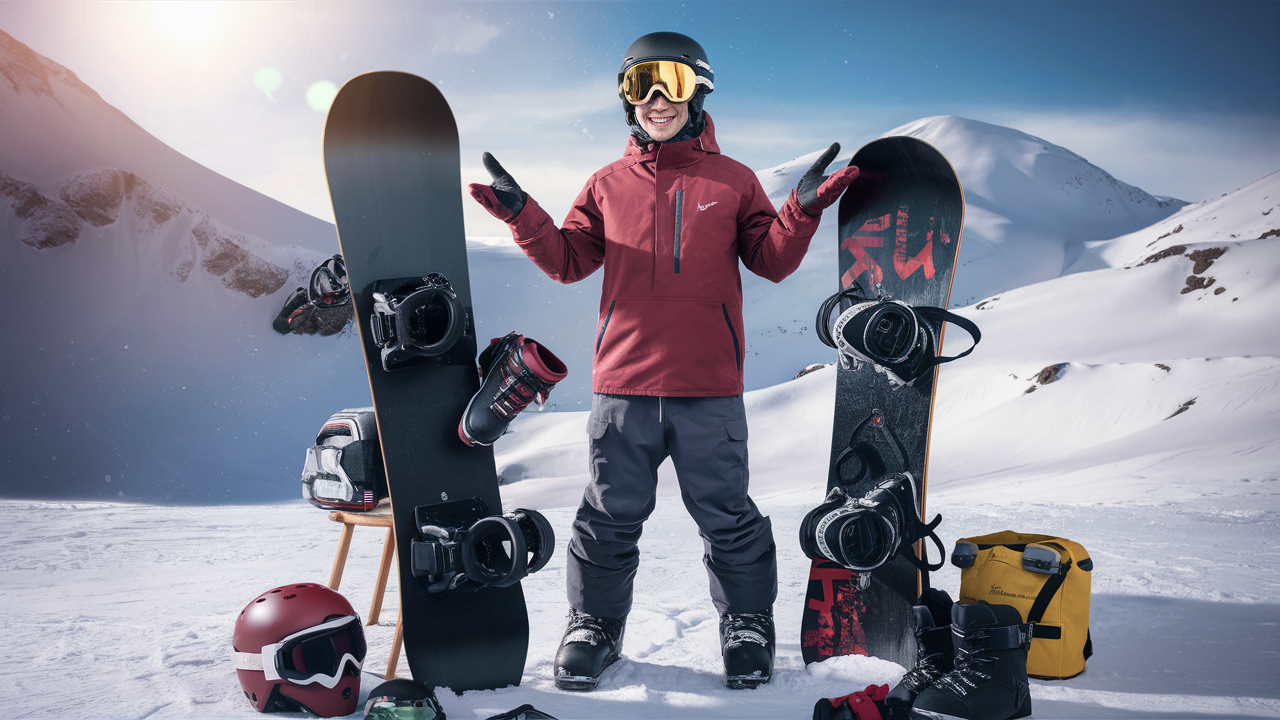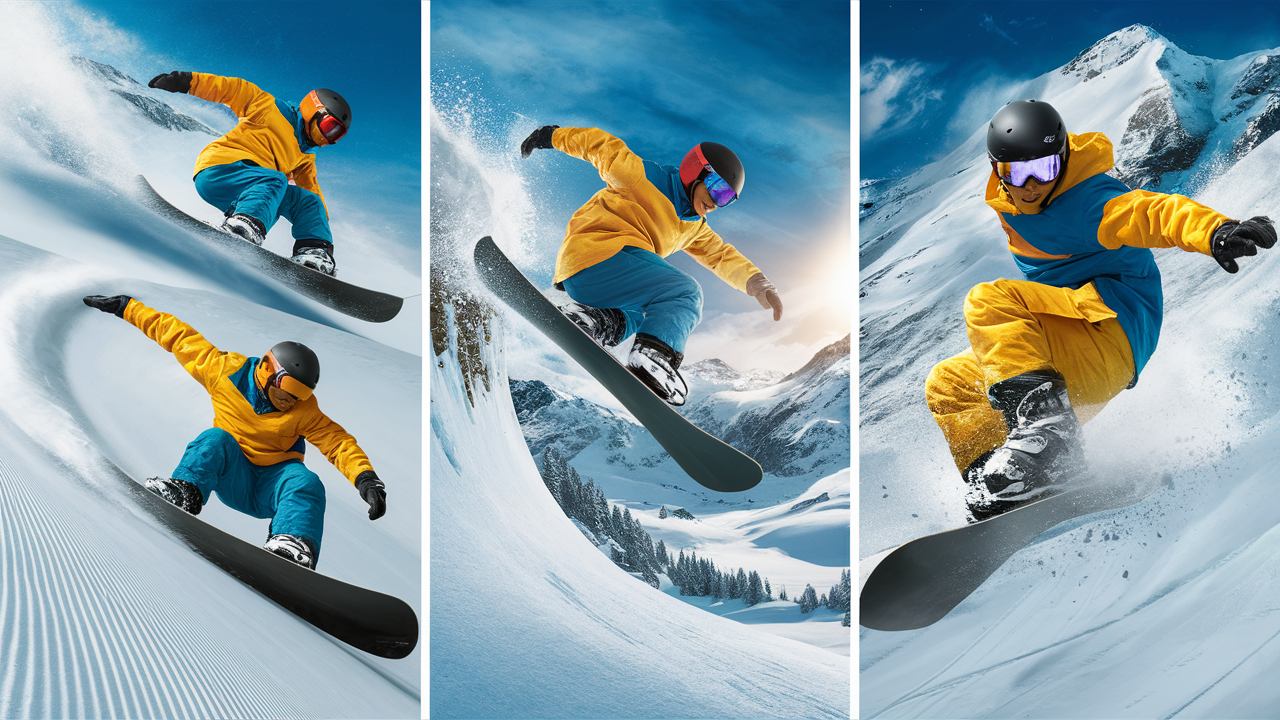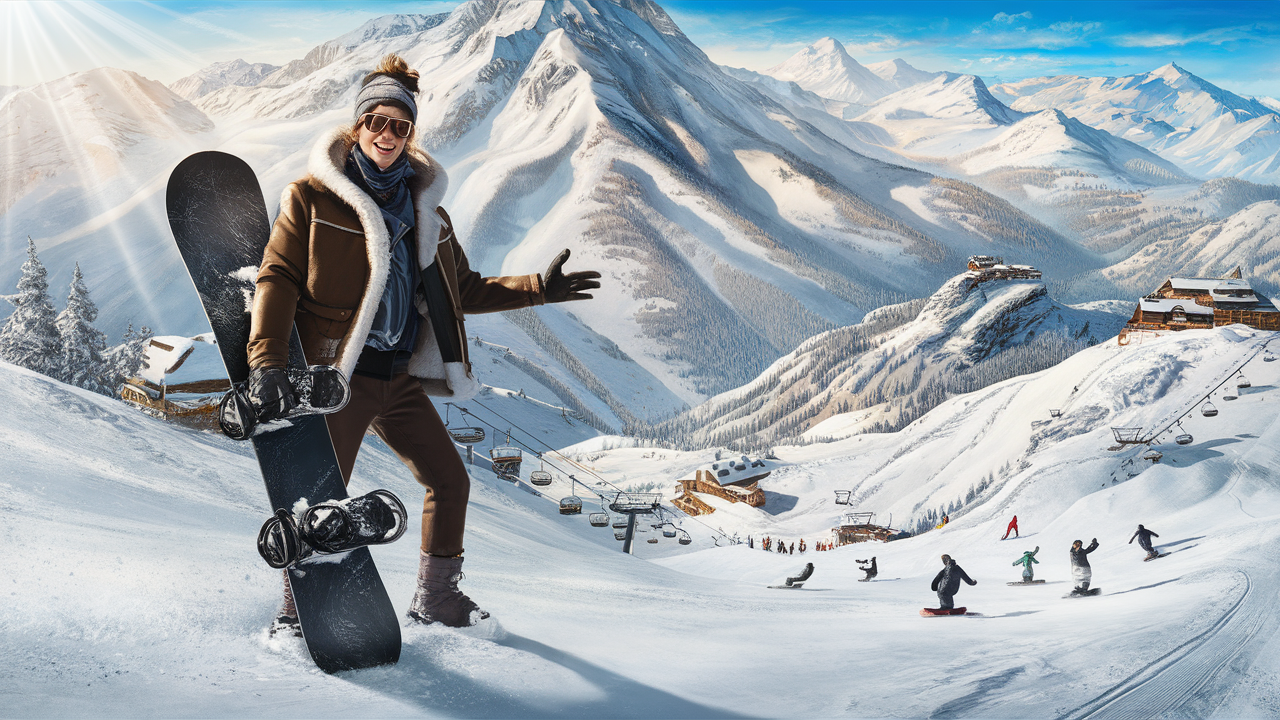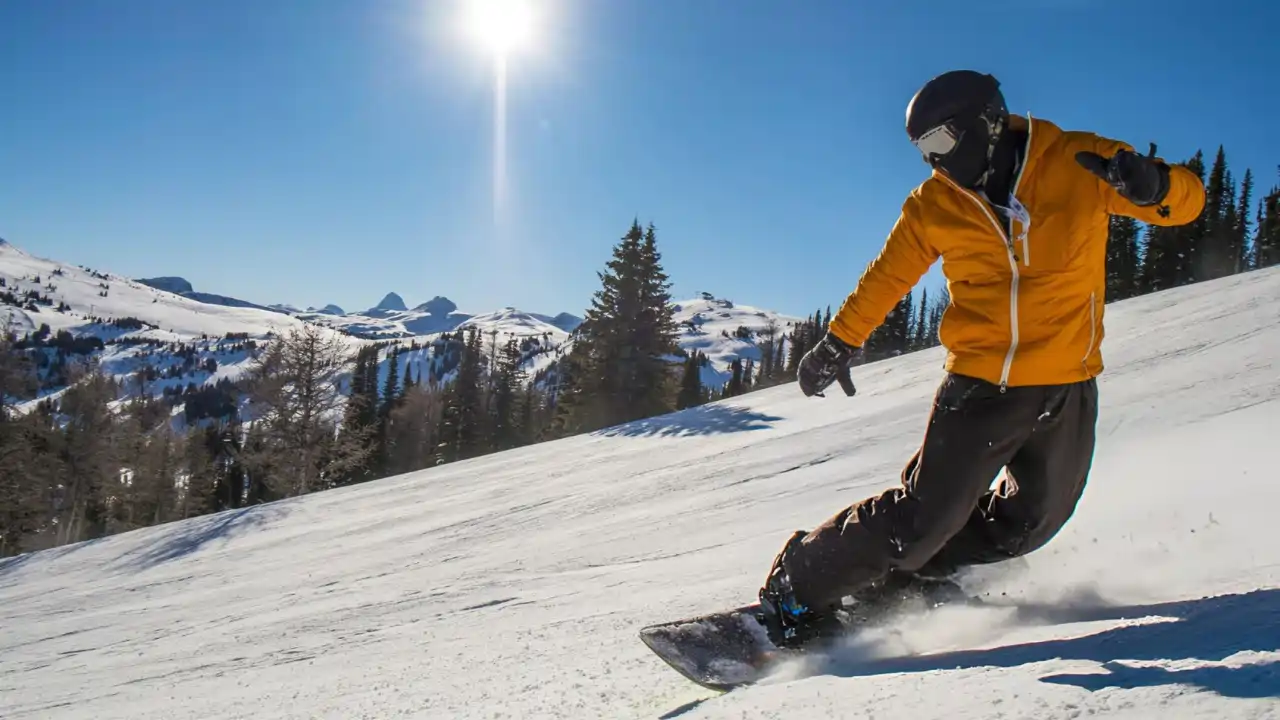The sport of winter skateboarding also called skateboarding snow, is a thrilling fusion of traditional skateboarding and the unique challenges of navigating snowy terrain to achieve the best result. During the winter, skateboarders usually switch from the pavement to the powder, captivated by the thrill of carving their way through the snow with their boards as the cold weather approaches. There is no doubt that snowboarding is an exhilarating and dynamic winter sport due to this change in environment, which requires a different set of skills and equipment.
A comprehensive guide to snow skateboarding, including tips, techniques, and equipment recommendations is offered in this article, which focuses on the essentials of this sport. Our guide will help you master snow skateboarding, whether you’ve never tried it before or if you are looking to refine your skills, so you can enjoy a safe and exhilarating ride through the snow.
Table of Contents
Understanding Snow Skateboarding: A Unique Fusion
In the world of snowboarding and skateboarding, Skateboarding Snow is an exciting hybrid sport that combines the thrills of snowboarding and skateboarding. Unlike snowboarding, which typically requires a complete setup with bindings and specialized boots to be able to engage in the activity, snow skateboarding involves riding a board without bindings. It is similar to traditional skateboarding in terms of the setup but offers a unique sense of freedom and flexibility.
In the absence of bindings, riders can perform more creative and intricate tricks, making it an appealing choice for those interested in exploring new dimensions of winter sports. It offers both seasoned skateboarders and winter sports enthusiasts an exciting alternative for enjoying snowy landscapes freshly and dynamically, offering a fresh and dynamic way to enjoy the beauty of snowy landscapes with snow skateboarding.
Choosing the Right Equipment

Snow Skateboards
If you want to have a successful Skateboarding Snow experience, you must choose the right snow skateboard. Snow skateboards can be classified into a variety of types, including the following:
- Bi-level boards:
These feature two levels, with a top deck and a bottom ski. While the top deck provides stability and control, the bottom ski enhances the ability to glide along the snow surface. - Single-deck boards:
These resemble traditional skateboards but are designed with materials suited for snow. Those who are experienced skateboarders will find them to be more familiar and comfortable.
In choosing a board, you will need to consider factors such as your skill level, your riding style, and the type of snow you are likely to encounter. Beginners will likely prefer bi-level boards for added stability, while experienced riders may choose single-deck boards for the greater maneuverability that they can provide.
Footwear and Clothing
For you to maintain grip and control on your board, you need to wear the right footwear. To keep your feet warm and dry on those cold winter days, we recommend wearing waterproof, insulated shoes with good traction. Furthermore, layering is one of the best ways to stay comfortable in cold weather since it keeps you warm. To stay protected from the wind and snow, wear base layers that wick moisture away from the skin and mid layers that provide insulation.
Mastering Skateboarding Snow Techniques

Stance and Balance
When it comes to snowboarding, maintaining the correct stance and balance is extremely important. Skateboarding snow is very different from traditional skateboarding, in that it must adapt to varying snow conditions. If you keep your knees slightly bent, you will be able to better absorb bumps and irregularities in the snow by taking a low, centered stance that helps with stability.
Carving and Turning
The ability to carve is a crucial skill in Skateboarding Snow, as it allows smooth, controlled turns to be made. For carving to be effective, the following steps need to be taken:
- Shift your weight:
Lean into your turns by shifting your weight towards your toes or heels. In this action, the edges of your board are engaged, which allows you to slide in a controlled manner. - Use your shoulders:
Lead with your shoulders to initiate turns. By using this motion, you will be guided naturally in the direction you want your board and lower body to go. - Maintain momentum:
Keep a steady speed to maintain balance and control. A sudden stop or jerky movements can cause you to fall, so you should avoid them as much as possible.
Tricks and Jumps
Skateboarding snow offers a great deal of variety in terms of tricks and jumps that can be performed. From simple ollies to more complicated flips and spins, the possibilities are endless when it comes to skateboarding. To get started, you will need to learn a few basics:
- Ollie:
The foundational trick involves popping the board off the ground by snapping the tail down and jumping simultaneously. - Shuvit:
A trick where the board rotates 180 degrees without the rider turning. - Kickflip:
A more advanced trick where the rider flips the board in the air using the front foot.
Riding in Powder and Packed Snow
To ride in different snow conditions, you need to adapt your technique to suit the terrain you are riding on. The light and fluffy texture of powder snow, which makes it ideal for powder skiing, necessitates a more relaxed and fluid approach to skiing. The softness of the powder provides minimal resistance, which allows for smoother and more graceful movements thanks to its minimal resistance.
Unlike packed snow, which has a denser and firmer surface, packed snow offers a more gripped and controlled surface due to its denser and firmer surface. It enables riders to make sharper turns and execute more precise maneuvers as a result of this. It is essential to adapt your riding style based on the conditions of the snow to get the best out of your snow skateboarding experience. By taking advantage of these variations not only will you be able to enhance your skills, but you will also be able to ride more comfortably and safely.
Safety Considerations
When it comes to snow skateboarding, safety is paramount. The following are some essential safety tips that you should know:
- Wear protective gear:
Helmets, knee pads, elbow pads, and wrist guards can prevent injuries in case of falls. - Check weather conditions:
Be aware of changing weather and snow conditions. When the visibility is poor or when it is very cold, you should avoid riding your bicycle. - Know your limits:
Start with easier slopes and gradually progress to more challenging terrain. In some cases, pushing yourself beyond your skill level can result in an accident.
Finding the Best Spots for Skateboarding Snow

Finding the perfect spots for Skateboarding Snow can enhance your experience, providing a range of environments suitable to meet the needs of different types of skateboarders. This is a perfect place for those of you who are looking for a controlled setting that includes ramps, rails, and other features designed specifically for snow skating. In these parks, riders can practice tricks and hone their skills in a safe environment.
When it comes to those seeking adventure, backcountry locations offer vast, untouched terrain, ideal for exploring natural landscapes and enjoying the freedom of riding in the wild without being limited by any restrictions. However, it is essential to prioritize safety in these areas as they can present several risks, such as avalanche dangers. To ensure a safe and enjoyable experience, it is important to wear the correct safety equipment and to stay informed about the current weather conditions.
Community and Culture
There is a vibrant community and a rich culture surrounding Skateboarding Snow. A sense of camaraderie and valuable tips are shared with fellow riders, which enhances the experience and provides a sense of belonging. This close-knit community is passionate about sharing their passion for the sport, often exchanging experiences, tricks, and techniques both in person and online as they share their knowledge and love of the sport.
Newcomers and seasoned riders alike can discover a wealth of information and inspiration via social media platforms and forums, which are filled with enthusiasts showcasing their skills and providing a wealth of knowledge and inspiration. You will not only be able to improve your skateboarding skills by becoming a member of this community, but you will also be able to immerse yourself in the unique culture of Skateboarding Snow, fostering friendships and experiences that go beyond the sport itself.
The Environmental Impact
In the same way that all outdoor activities leave a footprint on the environment, Skateboarding Snow does the same. We must be conscious of our impact on nature and take proactive steps to reduce the impact as much as possible. It is possible to significantly reduce our environmental impact by adopting simple measures, such as packing out all trash, respecting wildlife and natural habitats, and choosing eco-friendly gear, that can have a significant effect.
When we are mindful of these practices, we will be able to enjoy snow-covered landscapes for the benefit of future generations while maintaining their beauty. As part of a responsible Skateboarding Snow practice, not only will our experience be enhanced, but we will also ensure the protection of the environment that we cherish.
Conclusion
As the name suggests, Skateboarding Snow is an exhilarating winter sport that combines the excitement of skateboarding with the unique challenges of snowboarding to create an exhilarating winter experience. There is nothing quite like skating on snowy landscapes, whether you are an experienced skateboarder or an avid winter sports enthusiast looking for something different since it offers a fresh and creative way to enjoy snowy landscapes.
The key to making the most of this dynamic sport is to choose the right equipment, master essential techniques, and prioritize safety at all times. The sport of Skateboarding Snow gives riders endless possibilities for adventure, allowing them to explore a wide range of terrains and push themselves to the limit. It is time to embrace the thrill of carving through the snow, performing tricks, and experiencing the winter season in a whole new way with Skateboarding Snow.
Frequently Asked Questions (FAQs)
1. Can you tell me what type of board is used for Skateboarding Snow?
Skateboarding Snow can be classified into two main types:
A bi-level board consists of a top deck and a bottom ski, which provides stability and control to the border.
Boards with one deck: These skateboards are similar to traditional skateboards, but they have specific materials designed to make them suitable for the snow.
2. Is there a special shoe that I need for Skateboarding Snow?
There is no doubt that waterproof, insulated shoes with good traction are recommended during the wintertime. Wearing the right type of footwear will enable you to maintain a good grip on the board and keep your feet dry and warm.
3. When skating on a skateboarding Snow, how do you maintain your balance?
To maintain stability, it is important to maintain a low, centered stance with slightly bent knees. To stay balanced, you must adjust to any changes in the snow conditions and keep your weight centered.
4. Is it possible for you to perform tricks on a Skateboarding Snow?
You can perform a wide range of tricks on a Skateboarding Snow, including basics like ollies and shvits as well as more advanced tricks like flips and spins.
5. Can you tell me some safety tips for skating on snow?
Make sure you wear protective gear, such as a helmet and pads.
It is important to check the weather and snow conditions before going out on a ride.
Make sure you know your limits and gradually progress to more challenging terrain as you gain more experience.

